Affiliate disclosure: This post may contain affiliate links. Please see our Privacy Policy.
Staghorn sumac (Rhus typhina) grows just about anywhere and everywhere all across the eastern part of the United States.
All it needs is an abandoned field, highway median or roadside ditch and it’s happy as can be. There’s nothing like a tasty plant that just loves to grow in just about anywhere, it’s a forager’s dream.
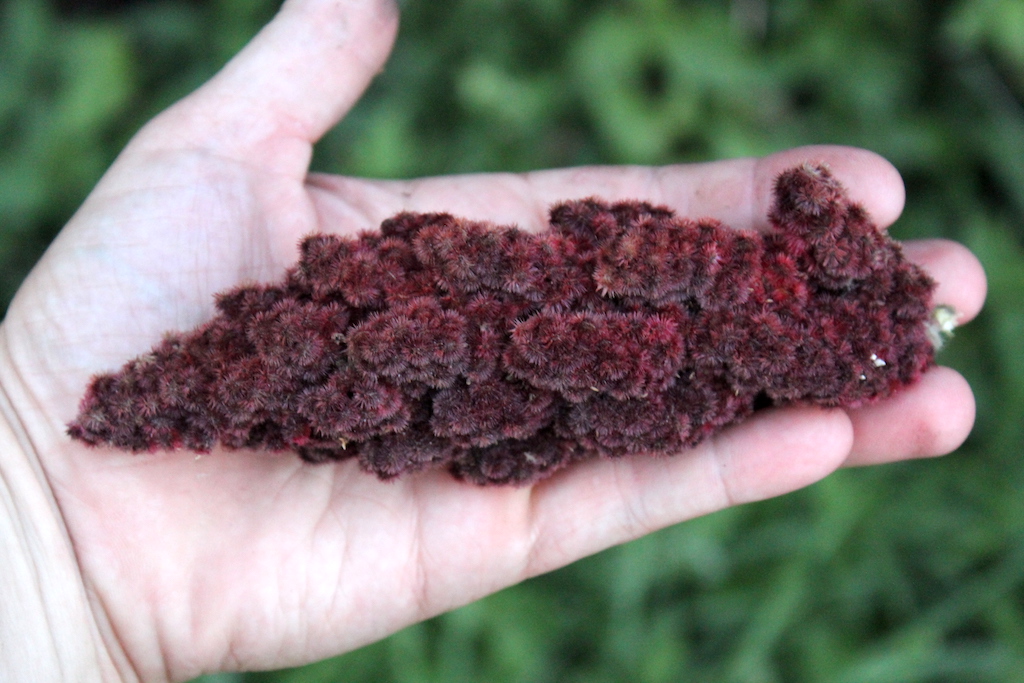
Everyone has their gateway plant into foraging, and more often than not it’s something like fresh dandelions on the lawn or a sweet patch of wild chanterelles happened upon in the woods. Mine’s a bit different you see. For me, sumac changed everything.
I’d been into herbal medicine since my early teens, but I never really considered myself a forager. At one point I found myself reading a herbal manual, learning about some of the medicinal plants traditionally used by native peoples in the northeast.
I came across a description of a plant with bright red, hairy fruit that grows upright in a pyramidal shape. It said they were just about everywhere in Vermont, but to the best of my knowledge, I’d never seen any hairy red fruits.
Of course, no pictures in the manual didn’t help. How on earth hadn’t I noticed sumac, if it does indeed grow everywhere? I kept my eyes peeled for over a year, hoping to spot a hairy red fruit, but no luck.
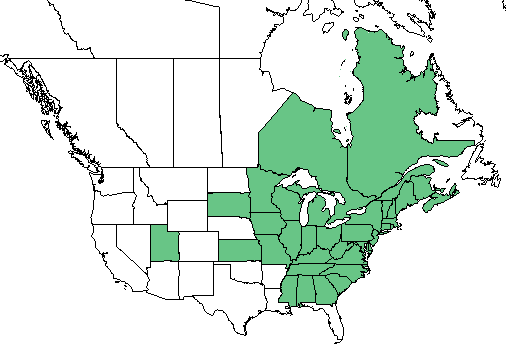
Then something magic happened. I was pulling out of the parking lot at work, right after I’d given my 2 weeks notice because we were moving to our dream homestead off the grid.
At one edge I see this strange-looking plant and realizing I have nowhere to be in that strange lame-duck period before you actually finish at a job, I stopped and got out to look. I examined it and found these strange upright clusters of bright red fuzzy seeds. They were beautiful, what on earth could they be?
And then it hit me all at once. The plant I’d been looking for all year had been growing not 50 feet from where I’d parked my car every day for the past 5 years. Sometimes all you have to do is open your eyes, and take the time to stop and really look, and there you find what you’ve been searching for.
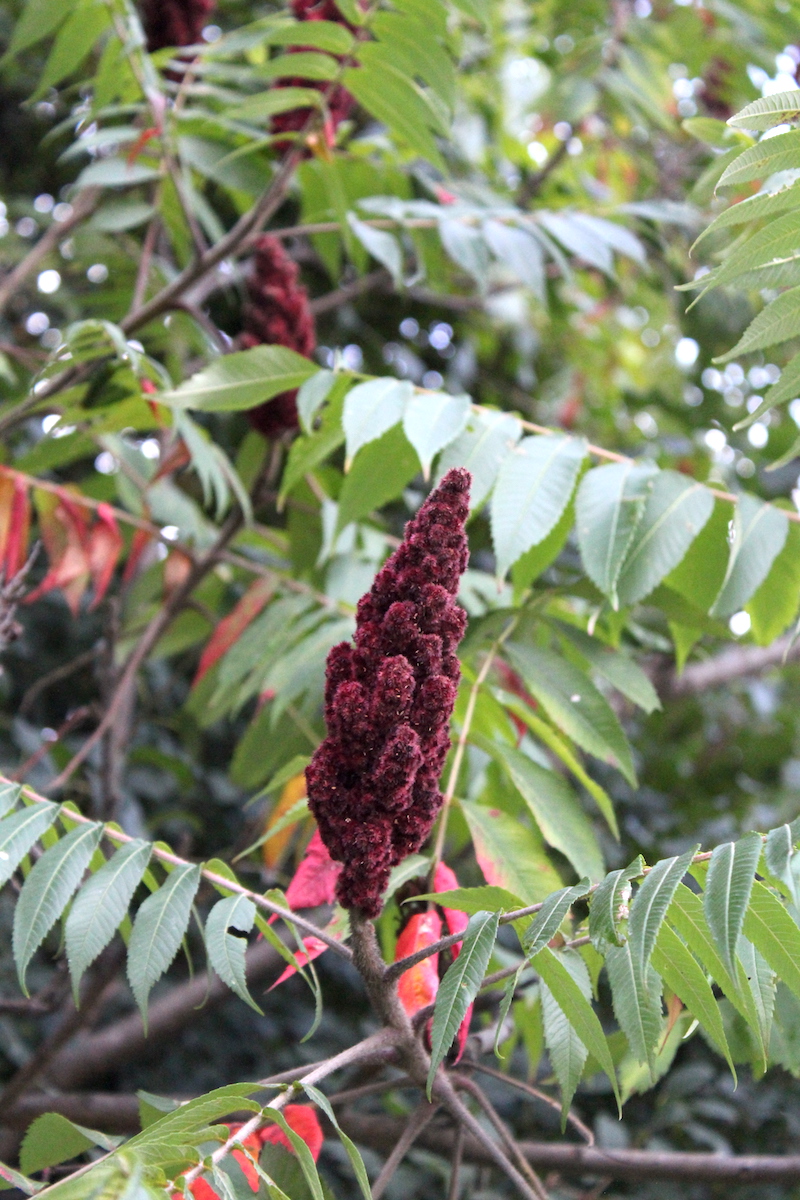
Identifying Staghorn Sumac
One of the reasons I had such a hard time finding staghorn sumac is that all the descriptions I read of the plant’s fruit and growth habit were absolutely useless. By some definition, it does have bright red “fruit” covered in fuzz, but more practically speaking the “fruits” are just clusters of seeds. Think of it more like the seedhead on millet or sorghum, but tightly packed and tapering to a point at the top.
The seeds are covered in bright red “hairs” that aren’t really hairs. They’re tiny fibers that are covered in a sticky resin-like substance. When you hold staghorn sumac, the fuzz will gently brush off and the aromatic oils within the “fuzz” will stick to your hands.
Sumac grows in colonies, with the older trees in the center as the tallest, and then gradually shorter tree/shrubs radiating out. They’re usually somewhere between 8 and 20 feet tall.
The leaf stalks reaching out from the main branches are large, around 2 feet long, and individual leaves coming out in matched pairs all the way down the stalk. In botany speak, they’re pinnately compound, with each leaflet lanceolate and serrate.
Here’s a bit of a better view of the leaves…note the serrated edges, an important identification characteristic.
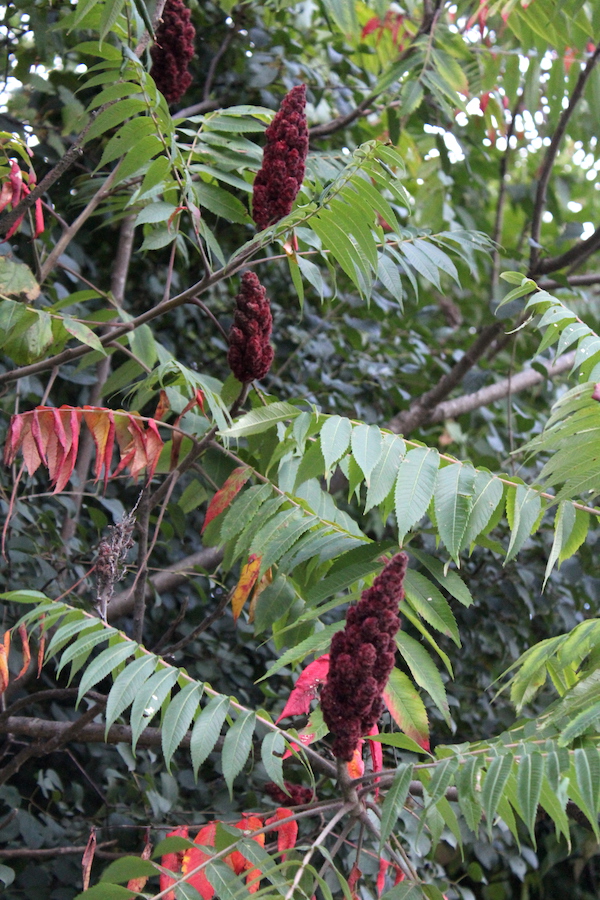
While most descriptions of this really common weed shrub come up lacking, I wasn’t disappointed when I finally flipped open A Forager’s Harvest, one of the best foraging books I’ve read to date.
The descriptions and pictures are consistently good, and the text is written from firsthand experience. Unfortunately, I found this book about 5 years after my first sumac, so alas…
The seed pods come out of the top of branches and usually point upward towards the sky. In the early spring, the immature seedheads are green until they slowly develop a pinkish tinge that spreads and gradually turns to a bright velvet red.
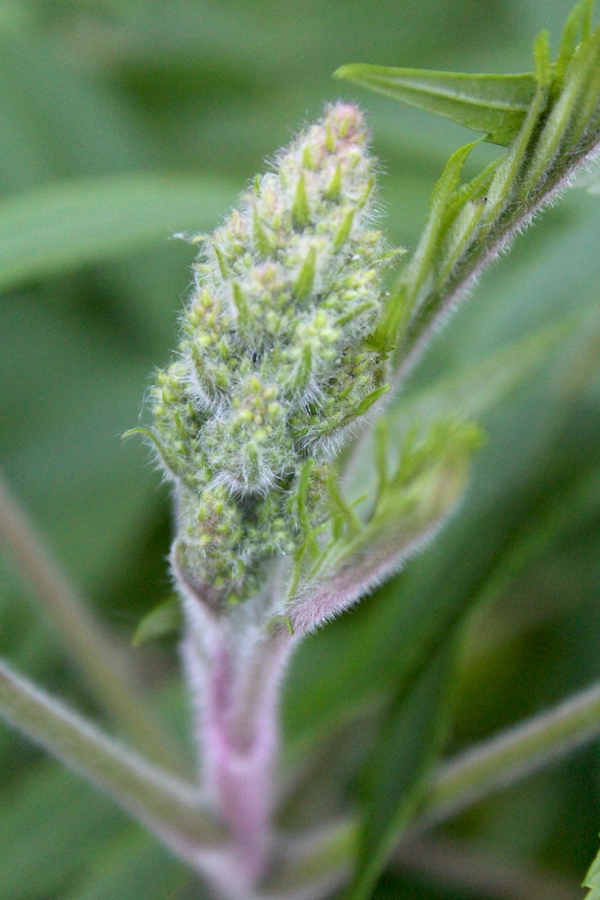
When to Harvest Staghorn Sumac
Once the seed pods ripen, staghorn sumac persists all throughout the winter. That means it can be foraged at almost anytime throughout the year assuming you can find seed pods in good condition. Depending on the weather and the exact site, the pods may degrade or discolor.
Often the pods become infested with worms in the center too, so the older the pods the more likely they’ve got someone living inside. For the most part that’s not a huge issue, if you just strip off the clean-ish seeds on the outside and discard the wormy center of the seed pod.
As the pods age, they begin to lose their flavor. The rain washes them out a bit and they’re not as potent or tasty. By late summer, flavors are waning, but they’re often still great in some locations into October or November.
Nonetheless, they’re one of the wild edibles that can be foraged all winter long if you choose. Even when it’s -20 here in a Vermont January, there’s still sumac a plenty, much of it still bright and almost good as new.
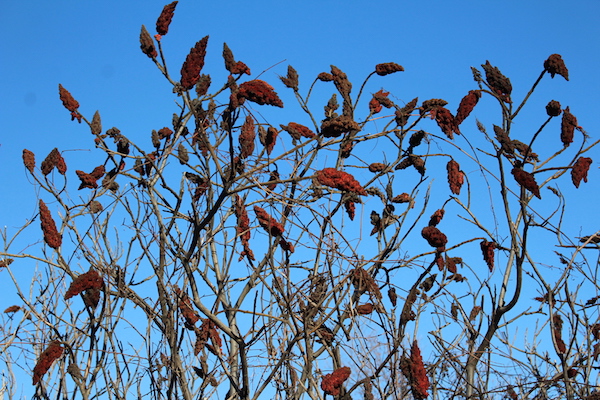
The only time it’s tricky to harvest staghorn sumac is in the late spring, when the old pods have begun to degrade and the new ones are still too green to harvest. You’ll often see the last remnants of last year’s pods picked over by the early spring birds. Generally, birds don’t go in for sumac, but early spring arrivals are less picky.
While spring may be a dry time for sumac pods, I’ve recently learned that the shoots are edible! Samuel Thayer describes his experience harvesting new sumac shoots as a child, “In the late spring and very early summer, I would gather these shoots on a daily basis and peel off the leaves and bitter outer bark, then eat the shoots raw. These are slightly sweet and delicious, tasting more like a fruit than a vegetable.”
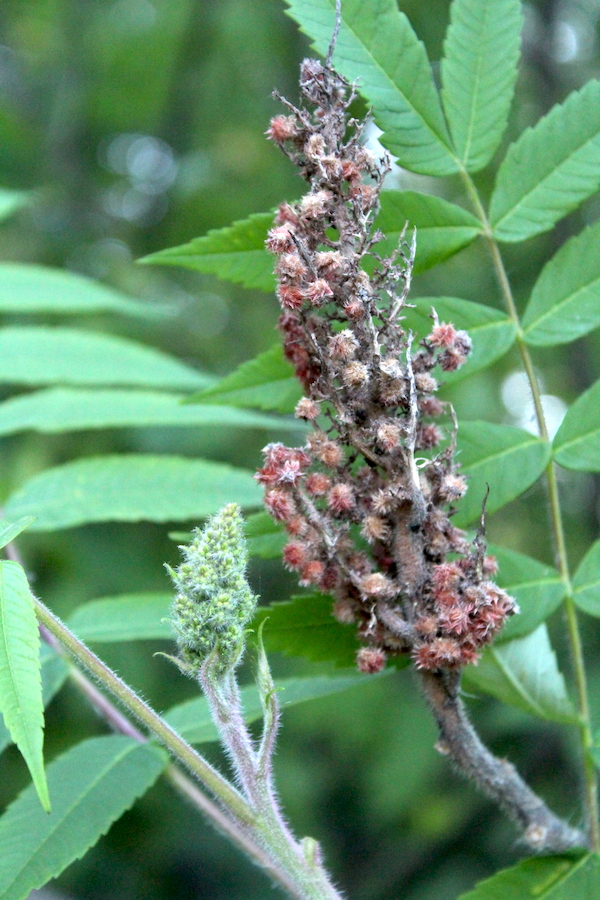
Toxic Sumac Look-Alikes
Poison sumac (Toxicodendron vernix) is considered a “look-alike” though really they’re only alike in name if you’re paying any attention. They’re not even in the same genus.
“The most important distinction is in the berries, which are whitish, waxy, hairless and hang in loose, grape-like clusters – quite unlike the berries of the edible sumacs. The leaves of poison sumac differ in being hairless and shiny with smooth margins. Poison sumac also differs in that it rarely grows in dense, pure stands, and it inhabits swamps. (Source)”
If you do manage to somehow mistake poison sumac for sumac, you’ll be sorry though. It causes skin reactions much worse than poison ivy and poison oak. If you’re looking at a stand, be sure to look at the leaves before you touch them.
Make sure the edges are serrated on the individual leaflets. Nonetheless, the presence of big red velvety seed pods is an easy giveaway, especially since poison oak berries are white and hang in bunches like grapes.
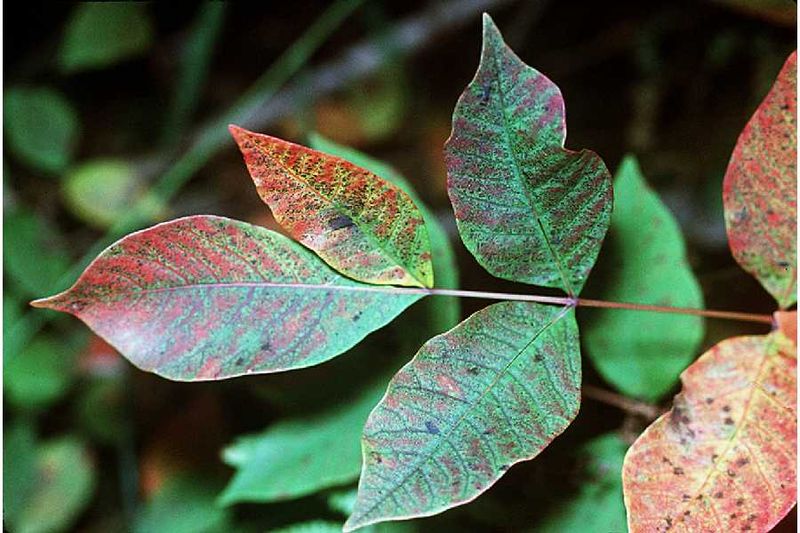
Processing Sumac Pods for Food
So now that you’ve harvested a few staghorn sumac “fruits,” how do you process them into food?
It’s actually the red velvet on the outside of the sumac berries that’s the tasty part. It has a wonderful sweet/tart citrus taste, that some liken to strawberry lemonade.
Since it already has that flavor, making a sumac lemonade is the obvious thing to do. The seeds and stalks contain bitter alkaloids that are extracted by hot water, so it’s important to only use cold water when making a sumac infusion.
The first step is to break apart the seed heads. In my first harvest, I just stuffed the whole pods into cold water and make lemonade that way…and it was horrible.
I cracked open the pods after and found them full of putrid dead worms and worm poop. Mmmm…worm lemonade. Don’t make that mistake, take them apart first. Start by pulling back individual bundles of seeds from the outside of the fruit clusters.
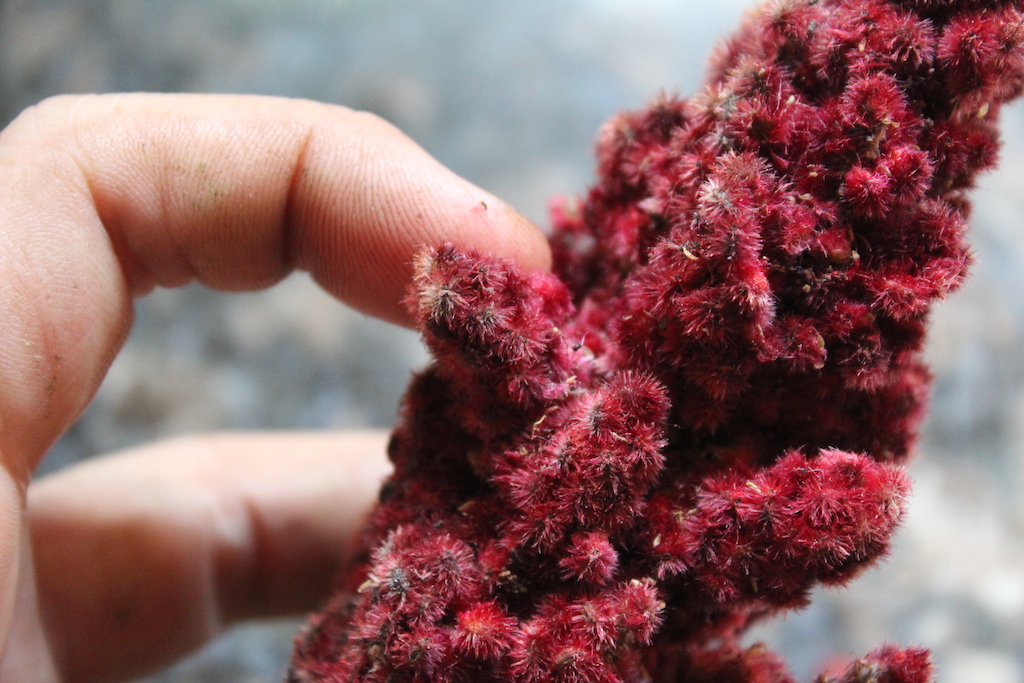
With a little gentle pressure, these break right off into your hand in tiny clusters.
Work slowly, because if you do hit a batch of worm poop you can keep the clean sumac separate if you’re careful.
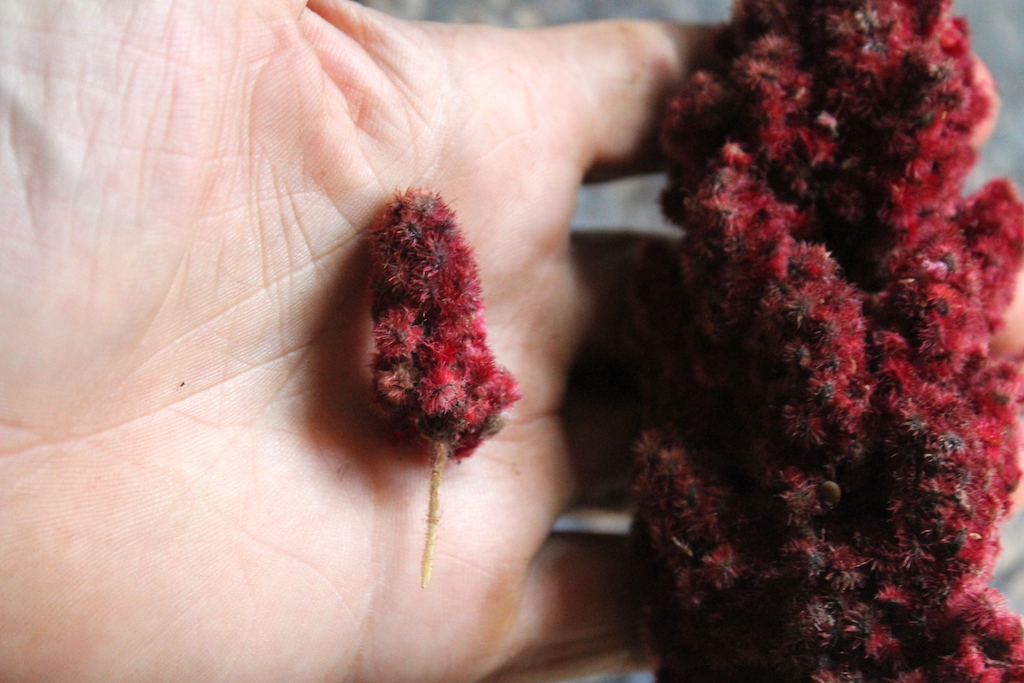
Individual clusters can then be broken down into individual seeds, removing as much of the stem as possible.
All the flavor is in the fluff, so try to just get red velvet-covered seeds separated from everything else.
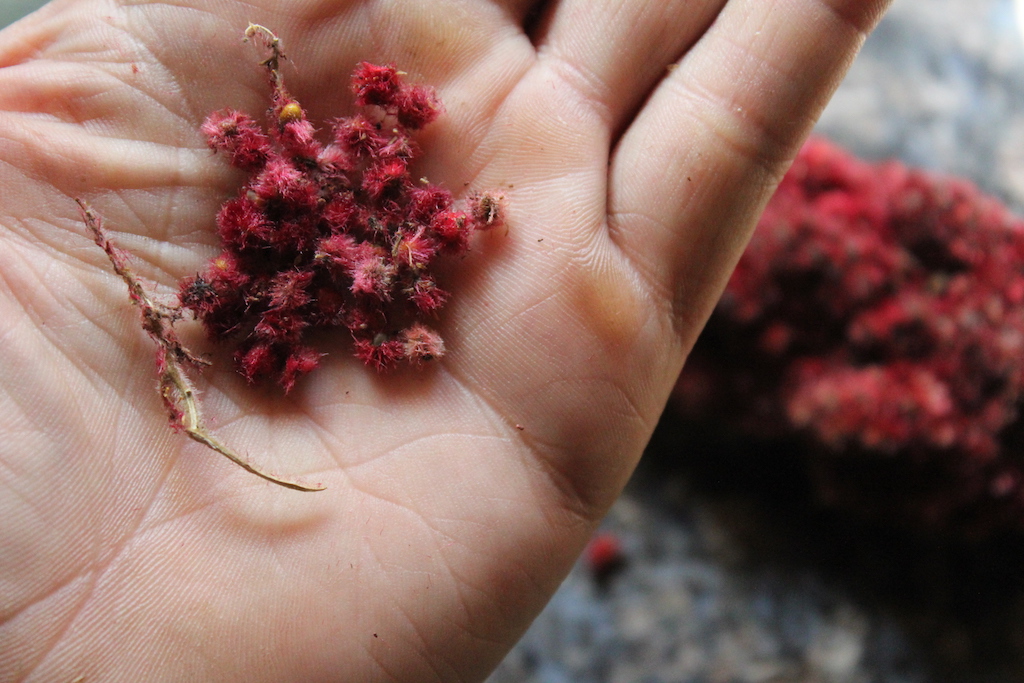
In the past, I’ve found a few sumac pods without worms, but those are rare in my harvests. Just about all of them are full of black worm poop, and this one was no exception.
As I pulled off the fluffy outer seeds I hit the poop layer right on schedule. That obviously, is where you stop. Keep pulling the clean seeds off the outside and leave the wormy parts for the compost heap.
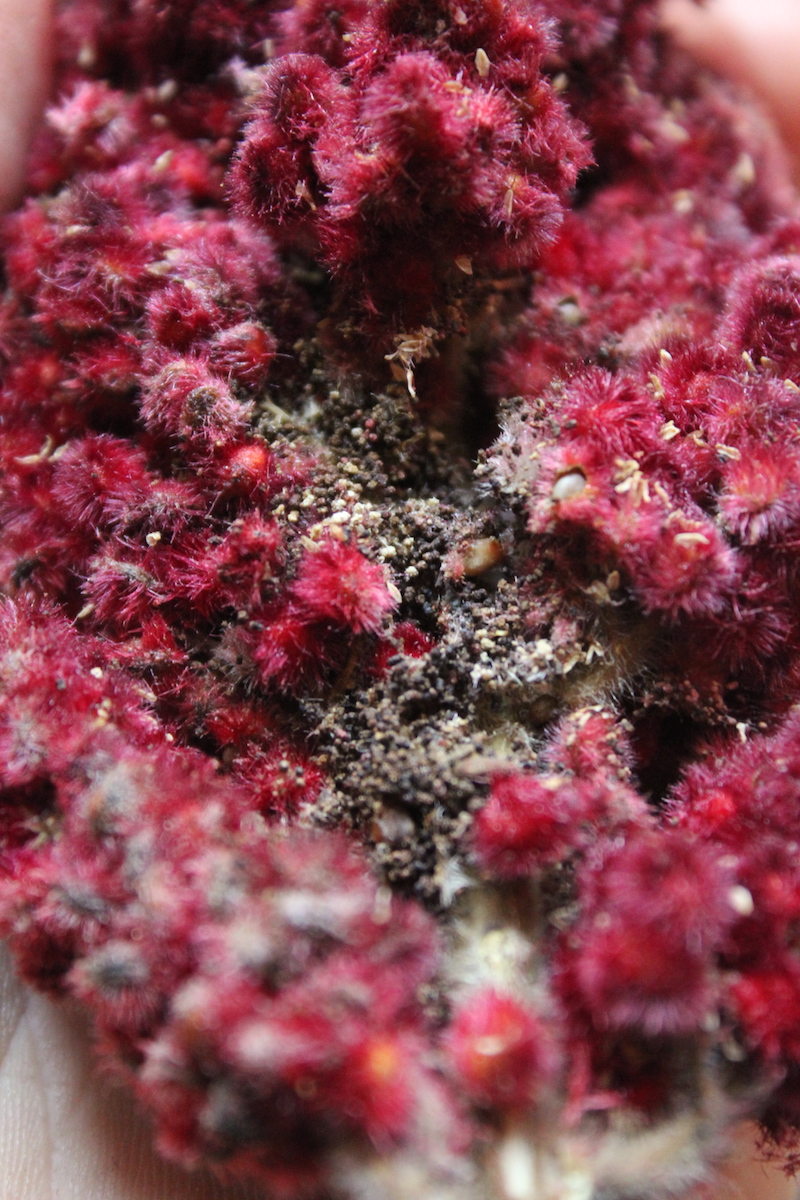
Even a wormy sumac pod still has plenty of velvet-covered sumac seeds to harvest. Work around the outside pulling off clusters and separating them out from the stems and worms.
I generally get a good-sized handful of clean berries from each pod, even the worst wormy ones.
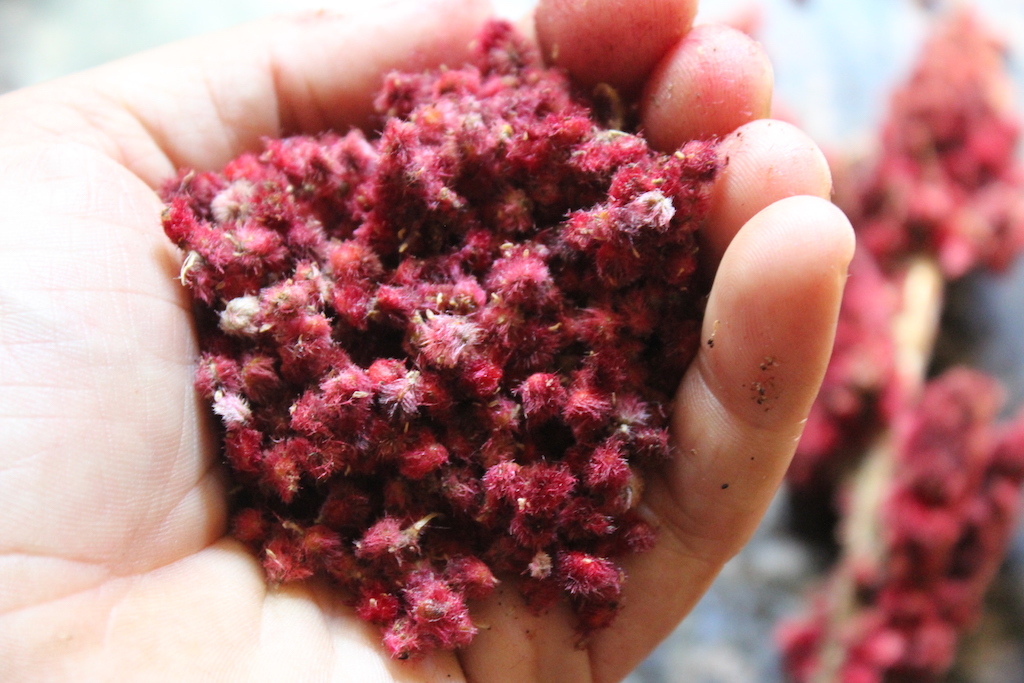
How to Use Staghorn Sumac
At this point, a simple overnight cold water extraction is the best way to get to the flavor. My friend Susan at Learning and Yearning suggests allowing sumac lemonade sit for just half an hour to extract, but I tend to like pretty tart lemonade with barely any sugar and a lot of lemon juice.
For your own tastes, you’ll have to work it out on your own. The berries aren’t particularly sweet, so add sugar to taste too.
I’ve seen a few sources that claim sumac was used by Native Americans to make cough syrup, and that a sumac infusion was gargled for sore throats. It is an excellent source of vitamin C, which would support its use for coughs and other illness.
For foragers in the northeast, where lemons are nowhere to be found, it’s a great option for extra vitamins year-round, and it’s a welcome change from the pine needles tea you’d otherwise be drinking for foraged vitamin C.
I’ve also heard it makes a great wine, and that’s next on my list to try this year.





a memory from michigan….going up to a neighbors cottage, and him complaining that all that grew up there was the ‘damn’ sumac……i thought they were velevety and beautiful and elegant….he was the superintendant of schools in my city……..people come to want to ‘separate’ themselves from….something….i never understood it to this day…..
I have read that they used to make candles (tallow-waxy type) from the Sumac seeds! I can’t find a specific recipe though, just references in the encyclopedias
That’s really cool. I hadn’t heard of that before but I would definitely be interested in learning more about it. Let us know if you find any more information.